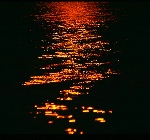Taking photographs of animals
Wild animals often are very shy. If you get too close, theyíll be gone.
Itís often best to sit down or stand still in a safe distance and wait for the animal to come closer.
You need much patience for wildlife photos, - but usually itís fascinating to watch the animal(s) anyway.
A strong tele lens also is very useful, especially if itís an anti-shake lens. Otherwise a tripod or monopod can help you to get sharp pictures even with a tele lens.
One of the most common mistakes when taking photos of smaller animals is to look down on them.
Usually, the picture will be much more lively and fascinating when you are at eye level, - even if this means getting down on your knees.
Also, itís not necessary to present the whole animal on all shots - often you can concentrate on parts of the head, very much like with a human portrait.
And, as in a normal portrait, the eyes are often the most important part of the picture.
Donít be stingy with the film, - taking many pictures gives you the chance to show the animal in various situations. 


Conversely, it may be good to show a bit of the natural surroundings:



Also, itís often nice to see animals interact:

If the animal moves, it is best to use a fast shutter speed.
This means that you may have to use a fast film or a high ISO setting on your digital camera.
A little flash can create a nice reflex on the eye, but you have to be quite close to use it and risk frightening the animal. Depending on the animal and the situation, it may either run away or even attack you.
Your pet, feeling safe at home may not object, but itís usually best to avoid using flash on wild animals.
Also, the inbuilt camera flash usually is so close to the lens that thereís a good chance that youíll get red eyes (the same as in human portraits).
Pre-flashes may avoid this, but you expose the animal to even more flash...

